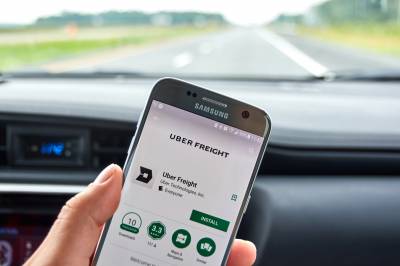
This has clearly been the year of the large M & A deal in the freight industry with TFII’s purchase of UPS’ LTL business (https://www.dantranscon.com/index.php/blog/entry/the-first-big-transportation-deal-of-the-year-tfii-s-purchase-of-ups-freight ) followed by Knight Swift’s acquisition of LTL operator AAA Cooper Transportation (https://www.dantranscon.com/index.php/blog/entry/why-are-large-ltl-trucking-companies-such-attractive-m-a-targets ). The Uber Freight purchase of Transplace for $2.25 billion is different from the other two acquisitions.
Unlike the prior mergers that combined two asset-based trucking companies, this merger blends two non-asset-based technology-driven freight brokerage operations. Uber Freight supplies shippers with real-time quoting and booking, using their freight management platform; it provides access to a network of US and Canadian-based carriers. Their focus has been on a transactional, instant gratification shipper-carrier load matching services. While still unprofitable, they have been achieving rapid growth in this segment of the freight brokerage market.
Transplace, while also in the freight brokerage space, has focused on large shippers with consistent freight volumes. Their technology is designed to marry this class of shipper with carriers that have the capacity and coverage to handle recurring traffic in designated areas. This is much more of a contracted business rather than a transactional business model. Transplace states on its website that it counts 62,000 unique users and has $11 billion of freight under management.
So, what made Transplace attractive to Uber Freight? Uber Freight is paying 22 .5 times EBITDA to acquire a company that has a current EBITDA run rate of over $100 million. This is a steep multiple, but Transplace’s earnings will improve the financials of the merged Uber Freight.
In addition to supplying Uber Freight with a foothold in another key segment of the freight brokerage market, it will also provide it with an entry into the Mexican market and allow it to offer intermodal and customs brokerage capabilities that it does not have today. The challenge will be to create synergies between the businesses.
Each organization has a set of shippers and carriers. While the expectation is that the businesses will be run separately, the question is whether they will be able to leverage their respective technology platforms, human capital, and customers to drive additional business through the enterprise? The other question is whether the businesses can benefit from the carrier networks of the other? It remains to be seen how complementary these related but different business models will be? The answer to this question will partially determine the success of the merger.
In order to maximize the value of this merger, the two parties will also have to look at the following. Both companies have a record of success in creating solutions for their customers. Now the focus must be on identifying the freight management problems that the new Uber Freight can solve better than either company did before. How will this merger make this a true “state of the “art” enterprise in freight management? Can some of Uber Freight’s small and medium size accounts benefit from a managed transportation solution, from intermodal and customs brokerage services and from Transplace’s Mexican operation? Will some of Transplace’s current customers or prospects benefit from what Frank McGuigan, the CEO of Transplace refers to as Uber Freight’s “deep data science capabilities?”
It should be stated that the success of the merged enterprise is not a “slam dunk.” It will take work and thought to optimize the unique attributes of each company.
To stay up to date on Best Practices in Freight Management, follow me on Twitter @DanGoodwill and join the Freight Management Best Practices group on LinkedIn.



















